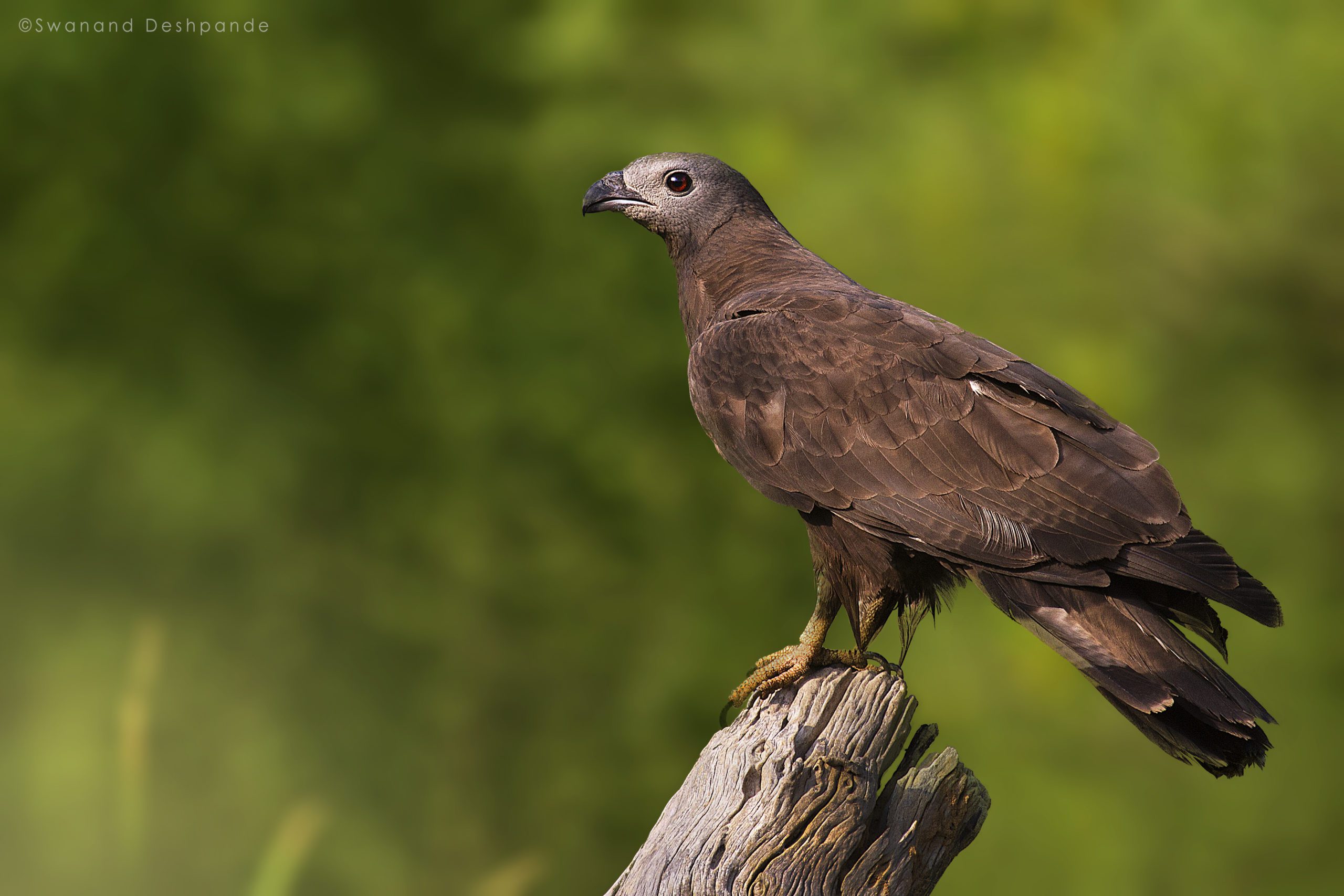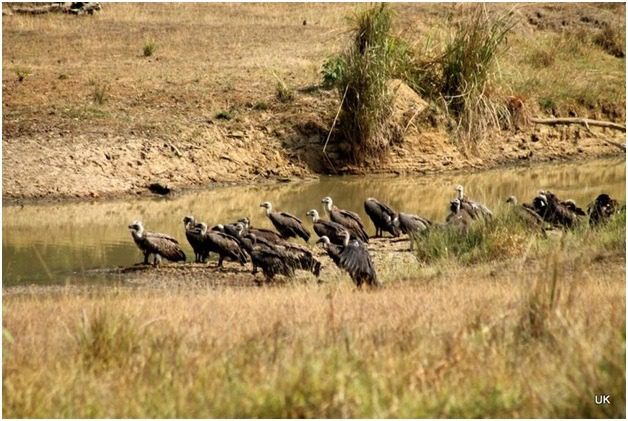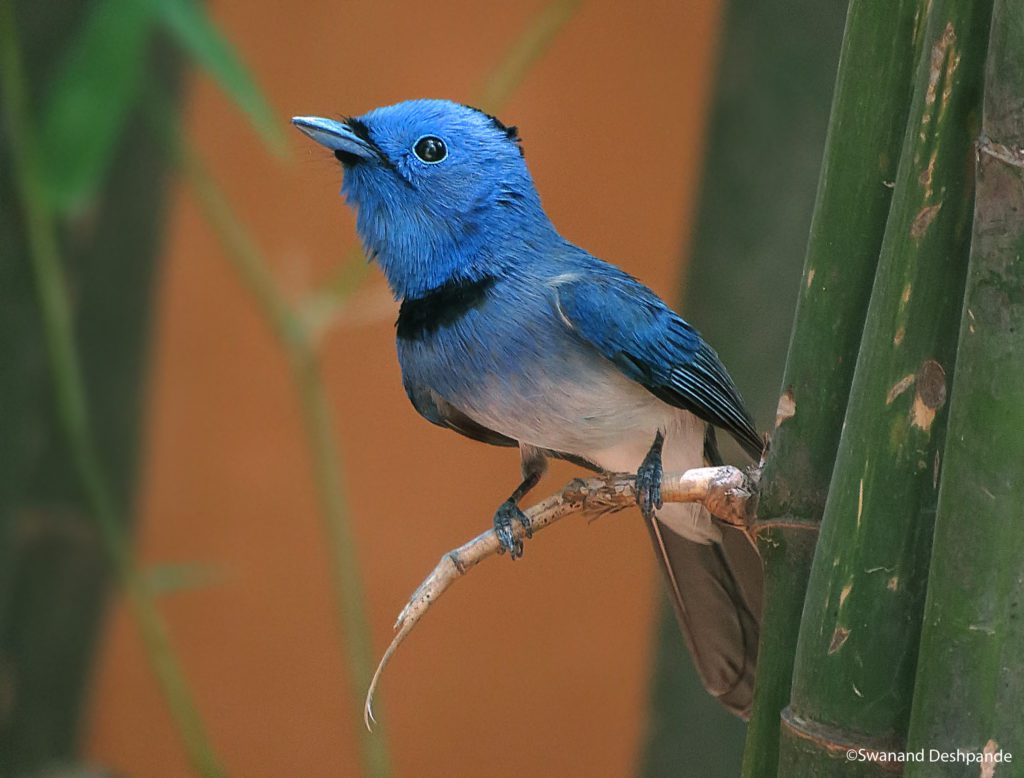1) Grey Jungle fowl (Gallus Sonneratii)
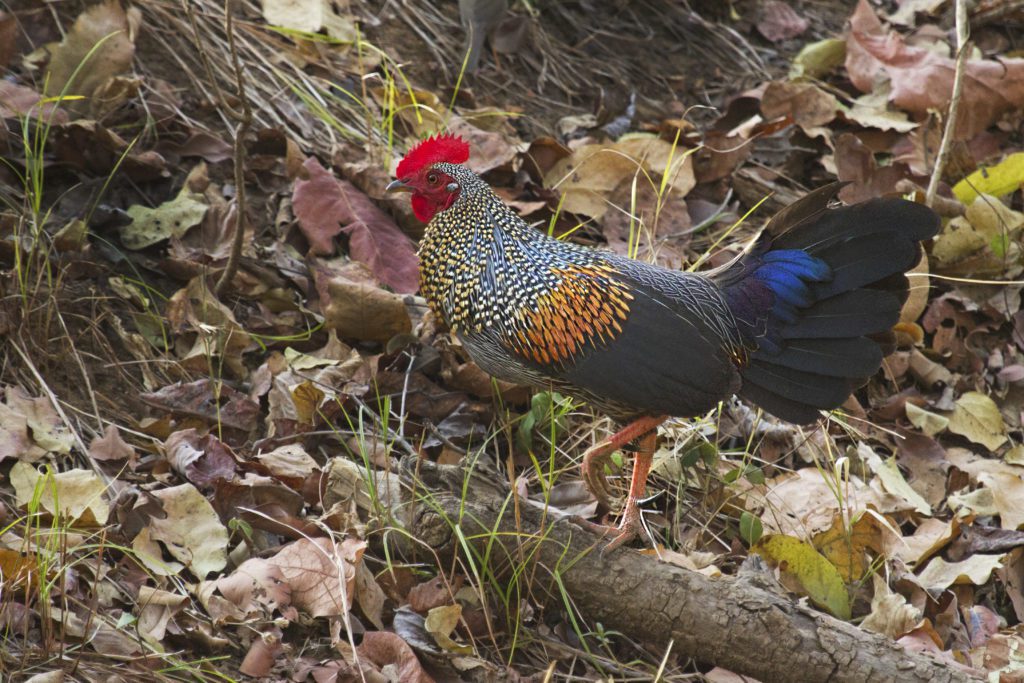
An ancestral wild chicken species, spectacular looking with bright plumage, is native to India. It is endemic to the evergreen hill forest in southern and western India. These shy ground-dwelling birds were also used as game birds.
Did you know?
· Male Grey Jungle fowls have ‘spur’ whereas females don’t.
· With a short wing-span, Grey Jungle fowl is capable of only brief spells of flight which it uses to flee from predators with a staccato burst of alarmed cackling.
2) Malabar Whistling Thrush (Myophonus Horsfieldii)
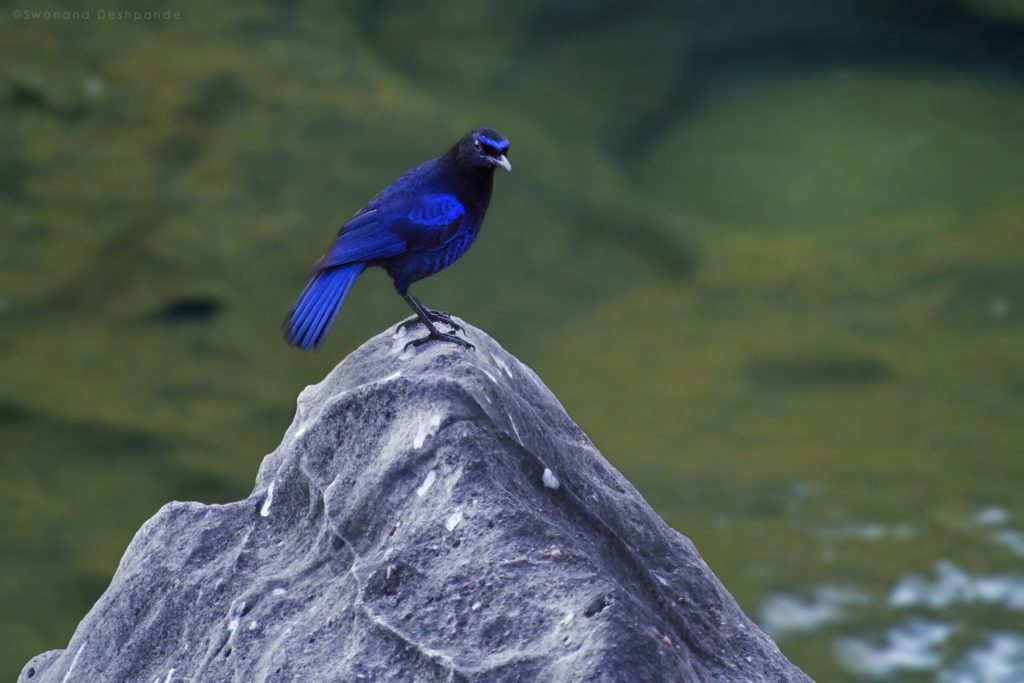
AKA ‘Whistling schoolboy’. Easily the most melodious songster of Satpura. Picture a roaring waterfall over a backdrop of the lush green forest around it and the Malabar Whistling Thrush echoing its famous tune. Now, these are the specific requirements when it comes to habitat. Waterfalls, rocky forest terrain, and dense vegetation. Luckily for the thrush, Satpura has it all.
Did you know?
· Malabar Whistling Thrush also has a cousin up in the northern part of India, the foothills of Himalayas, called Blue Whistling Thrush. Travelers often wake up to the melody of this bird instead of the alarm clocks, as the calls that they make at dawn.
· Malabar Whistling Thrushes were once popular as cage birds, with the ability to learn an entire tune.
3) Indian Skimmer (Rynchops Albicollis)
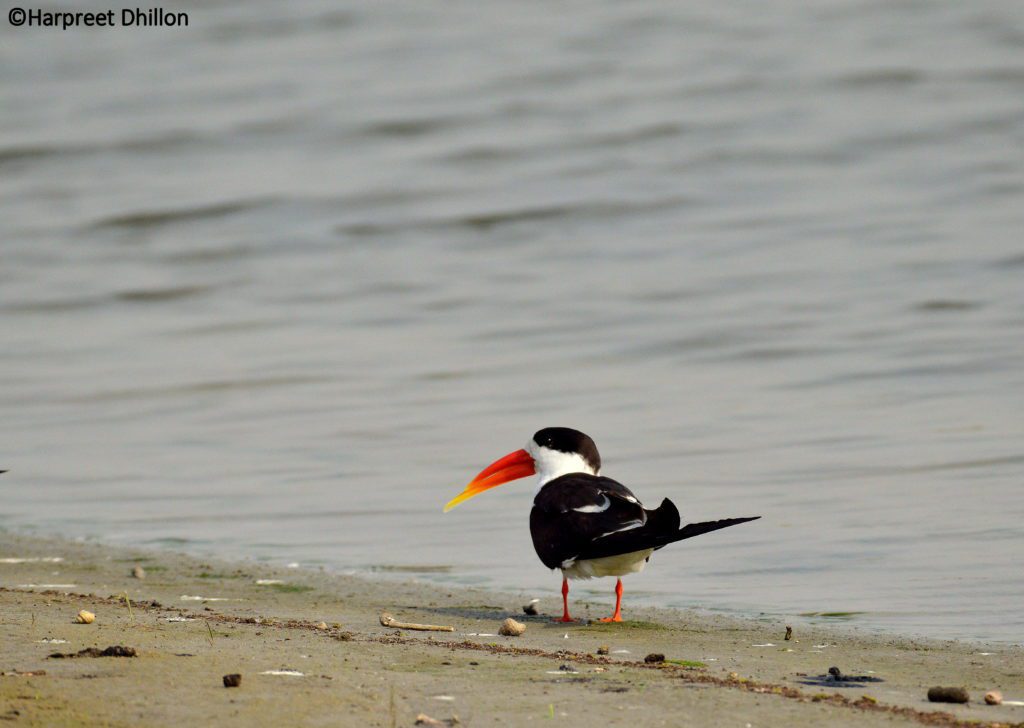
Now, this is a rare one. Today less than 10,000 skims over the rivers of India and Pakistan, giving it the status GLOBALLY THREATENED by the IUCN. Known for their incredible flight patterns, mid-air maneuverability and of course, skimming over water surface for crustaceans and small fish. For years now, skimmers have made Denwa mudflats as their nesting grounds.
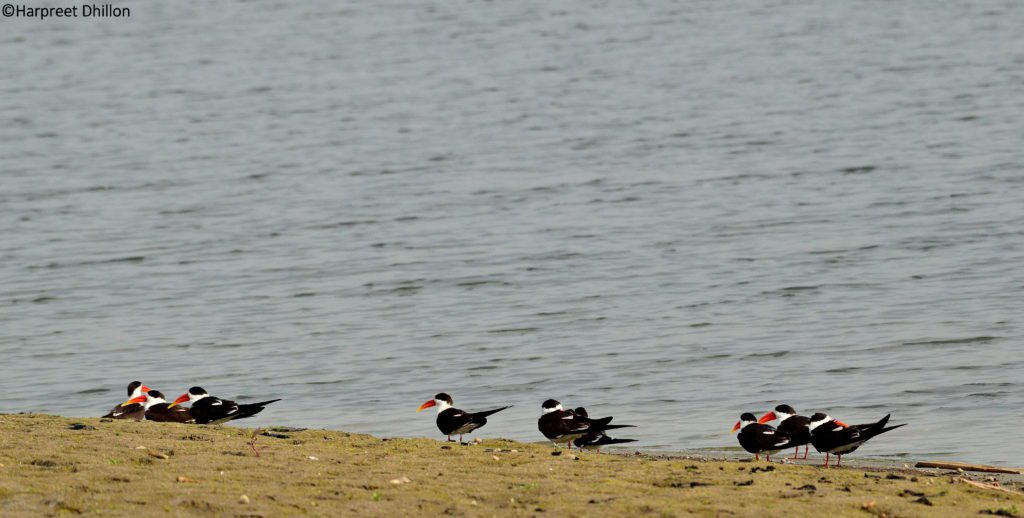
Did you know?
· Their beaks are really interesting. The upper mandible is remarkably shorter than the lower mandible. The lower mandible is flexible and resembles a knife and is skimmed through the water surface to catch the prey whereas the upper mandible is capable of considerable flexibility.
4) Bar Headed Geese (Anser Indicus)
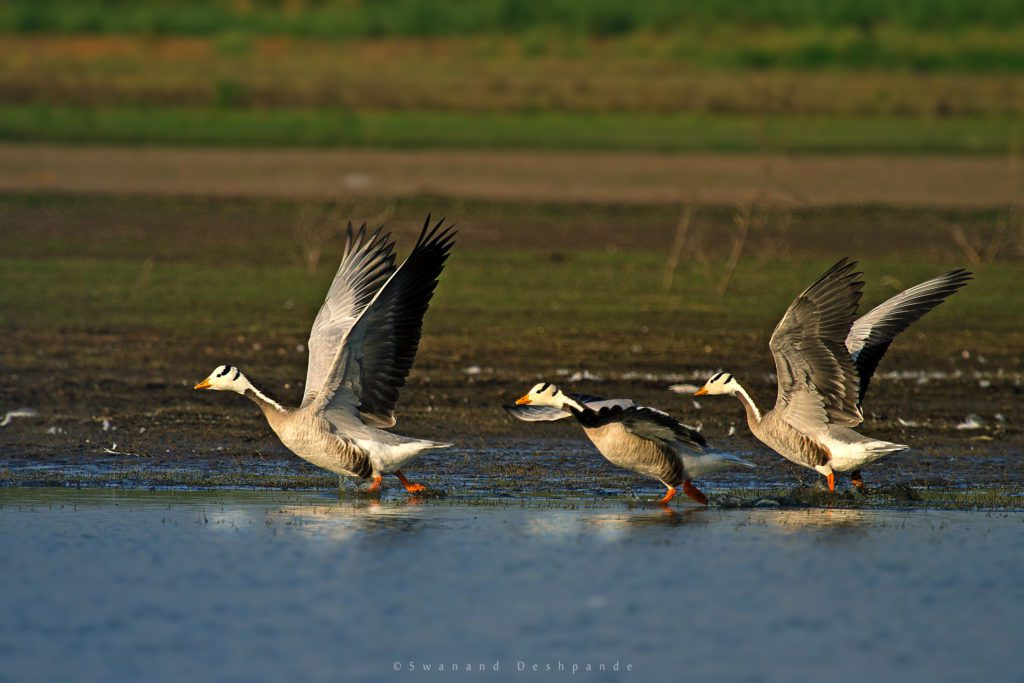
This is a creature that is extensively studied yet it is full of mystery and wonder. It has a reputation for ‘Star migrants’. Modern science has still not been able to prove how in the world these birds achieve such a remarkable feat. These are the high flyers, avid travelers, and beloved guests to Central India. The Bar Headed Geese are resident breeders of the Trans Himalayan belt and further up in Central Asia.
Did you know?
· Bar Headed Geese are not only just high flyers, capable of flying over 7KMS above sea level but also speedy travelers, achieving a speed of 150 KMS/HR.
· Whilst migrating over the gigantic Himalayan belt, the geese have to go through temperatures as low as -50C with barely any oxygen in the air. To survive this, evolution has blessed them with an extremely fast-beating hearts and higher absorption rate of oxygen through hemoglobin.
5) Savanna Nightjar (Caprimulgus Affinis)
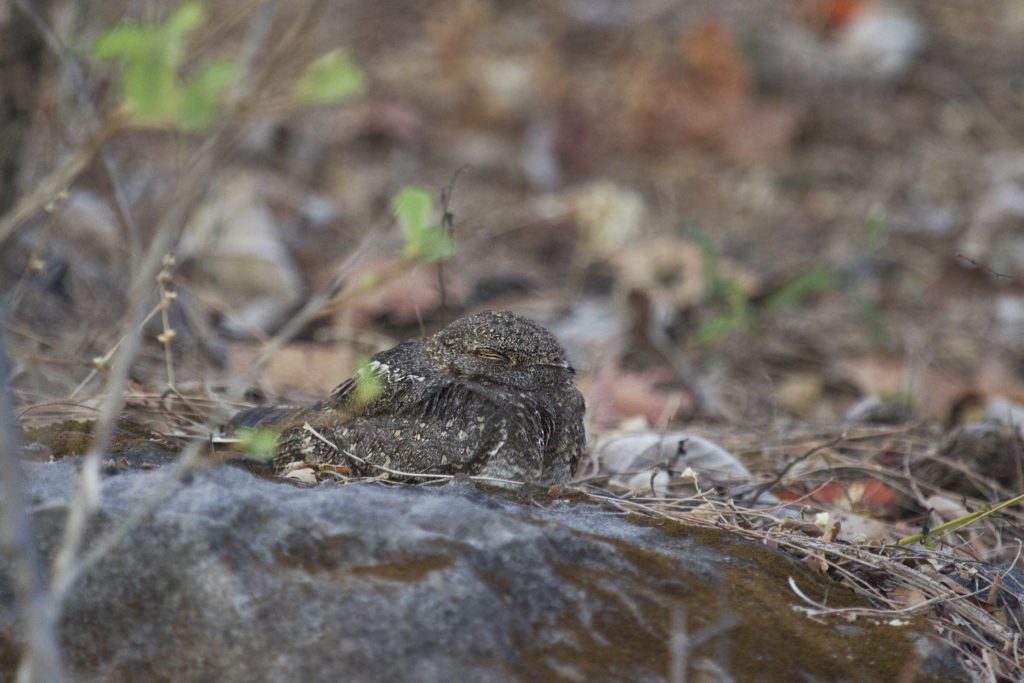
At the night, the forest is a completely different ball game, and in this game, there are nocturnal creatures who rule the skies. No, not the owls, the nightjars. Masters of camouflage, strictly nocturnal, usually solitary but can be found as gregarious feeders in the loosely organized flock. They are called nightjars for the “jarring” sound they make at night. Predominantly found near rocky outcrops of scrublands and open woodlands.
Did you know?
· It is not just the plumage that is cryptically colored but also their eggs. Being ground-nesting birds, the nightjars need to master the art of camouflage and do so with flying colors (or not) for the ultimate survival.
· During hot summer days, birds move into shaded areas to keep themselves cool, however as the nightjars stay at one place for the entire day, trying to blend in with earth, they have to thermoregulate better than most of the birds. This involves keeping the mouth open a bit and fast vibrating the vocal sack.
6) Grey Headed Fish Eagle (Ichthyophaga Ichthyaetus)
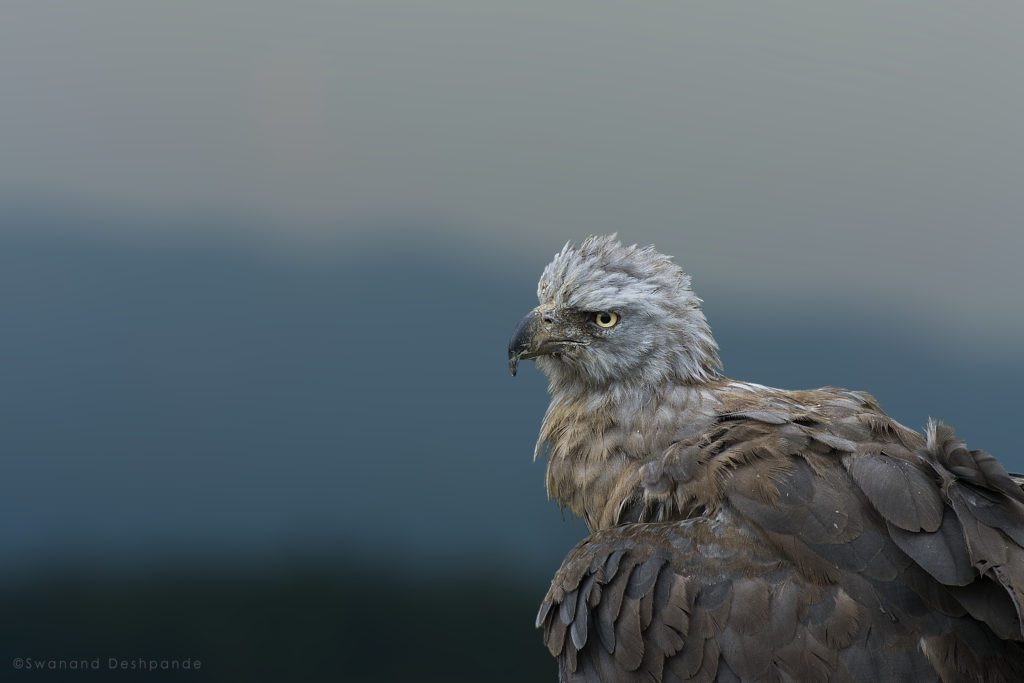
This one is one of the strongest raptors. Capable of pulling out fish twice the weight of the bird, it is a true ace predator of the pristine rivers. This is one of the birds who need clean waters as their habitat. Satpura has many nesting spots of this magnificent bird.
Did you know?
· There is another subspecies up in the North-Eastern part of India, Lesser Fish Eagle, albeit same looking, have minor morphological changes.
· The Fish Eagles collectively are considered as keystone species. Their existence and role in the ecosystem are paramount. Being the apex predator over the wetlands, their reduction will lead to flourishing prey species which ultimately will lead to an imbalance in biodiversity.
7) Red Avadavat (Amandava amandava)
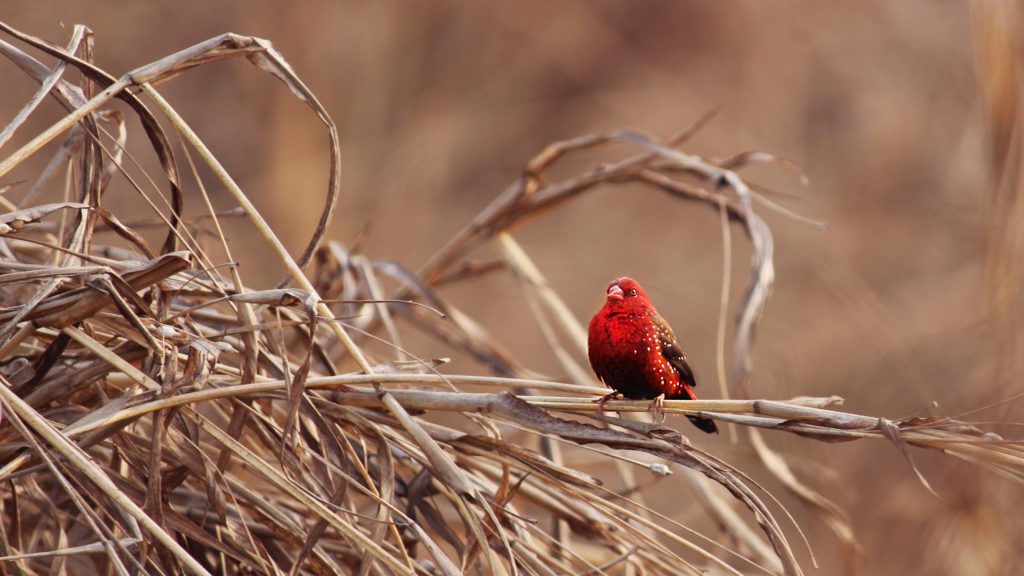
Red avadavat are strikingly beautiful birds, having bright red plumage with white spots running down the breast. Hence because of this coloration, they are also called strawberry finches. These are gregarious birds just like most of the finches and sparrows. When they are threatened, they move their tails from side to side and at a downward angle. The parent birds keep collecting the nesting material and maintain the nest even until the chicks hatch and are ready to leave the nest.
Did you know?
· Previously in the past, strawberry finches were traded abroad from the city of Ahmedabad, from which the name of the bird “avadavat” and species name “amandava” are derived.
· They display social behavior by preening each other from the same flock.
8) Golden Fronted Leafbird
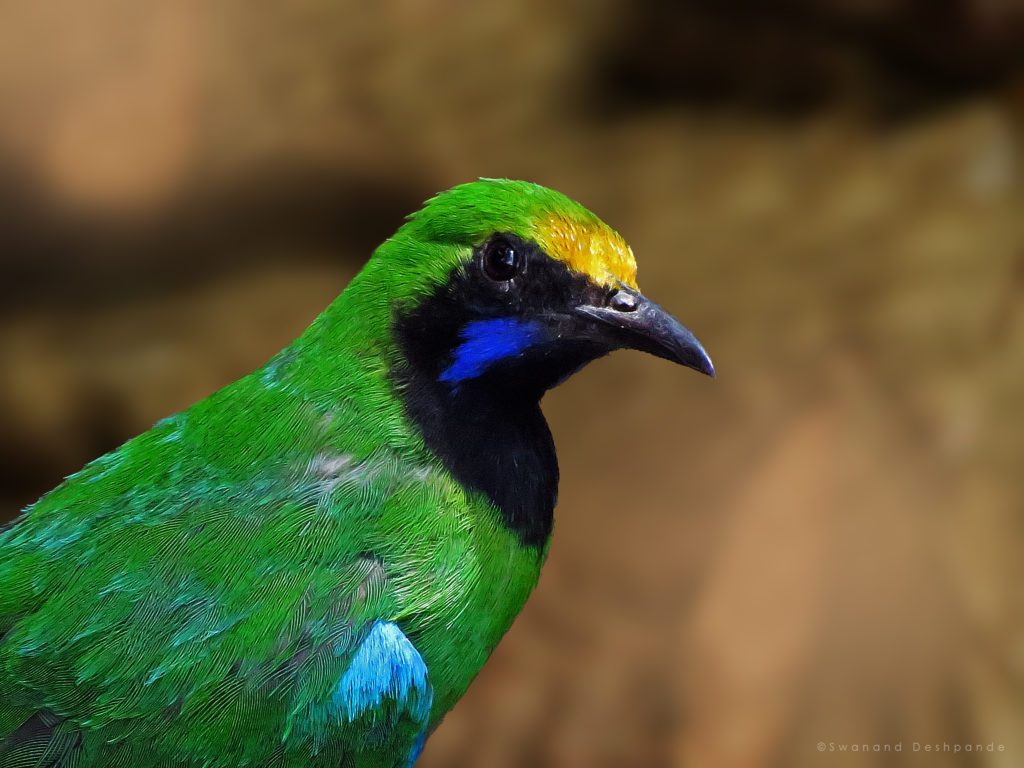
A bird literally the color and shape of a leaf. There are four species of leafbirds in India. The commonest ones in India are Golden Fronted Leafbird and Jerdon’s Leafbird. Mostly insectivore, but they also feed on berries and flower nectar.
Did you know?
· When in extremes stress or feel threatened, leafbirds can lose their brightly green colored feathers. This helps to confuse the predators.
· Leafbirds are also excellent mimics and often cause confusion in the bird watchers. Older males are better mimicry artists than immature ones.
9) River Lapwing (Vanellus Duvaucelii)
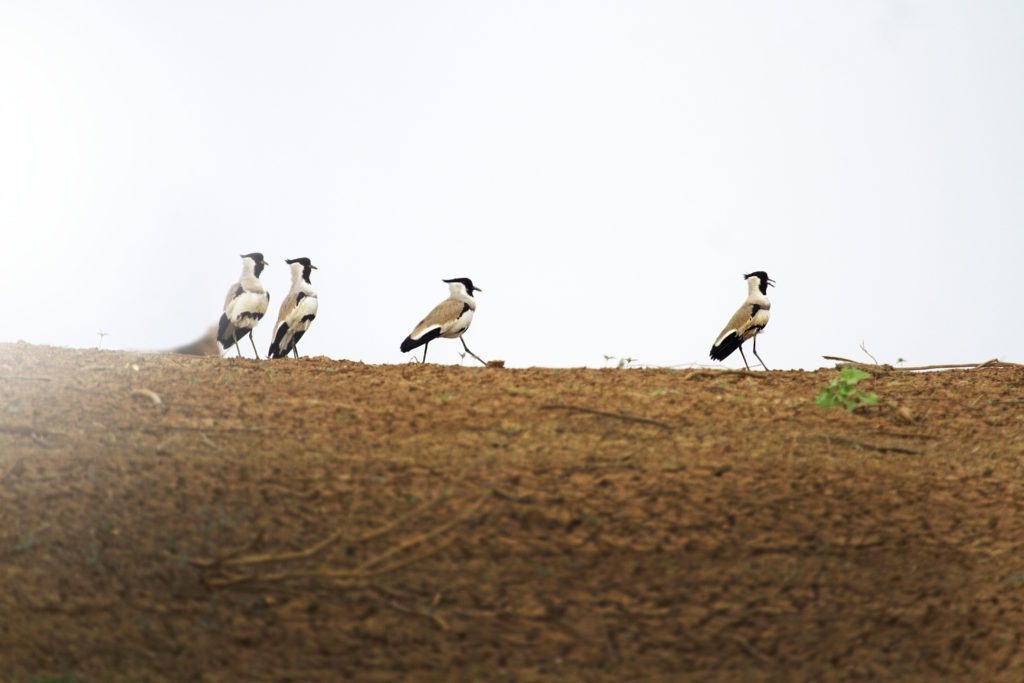
Lapwings are also known as ‘peewits’ due to characteristic high-pitched calls ‘pee-wit’ which males produce during mating season.
It is exclusively seen on islands in large rivers or open, muddy river margins.
The breeding display on the ground includes stooping, spinning, stretching and crest-raising.
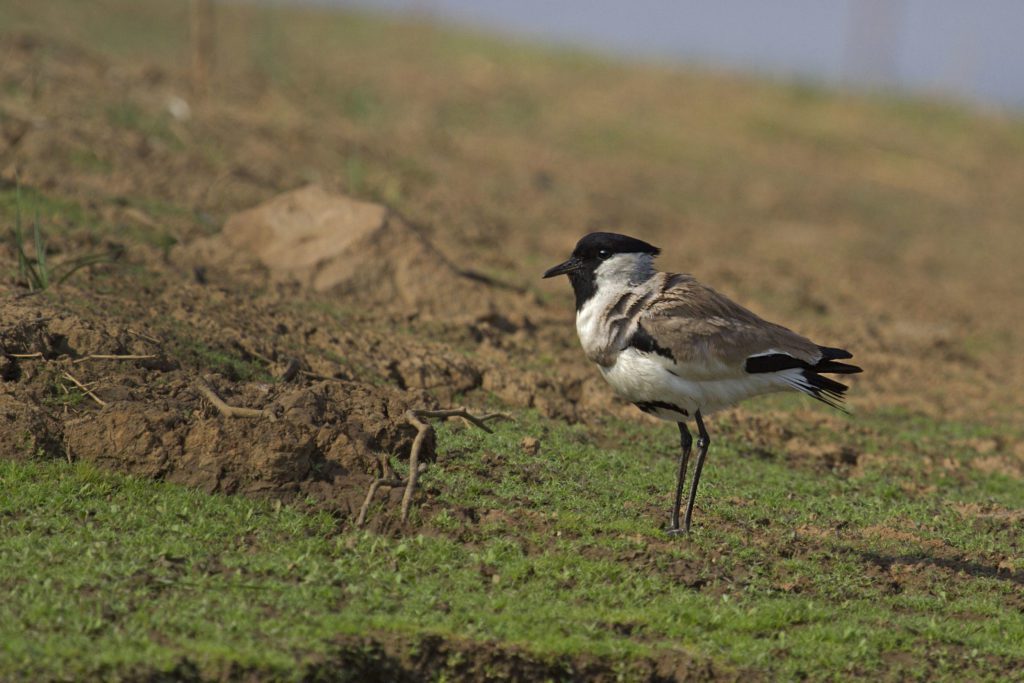
Did you know?
· Lapwings exhibit a ‘Broken wing display’. The broken wing display is a feigning behavior that some ground-nesting birds perform to lure a potential predator away from the bird’s nest or chick.
· Previously aptly named the ‘spur-winged Plover’, the River Lapwing is a striking species with real spurs on its wings used during duels with fellow River Lapwing.
10) Eurasian Wryneck (Jynx Torquilla)
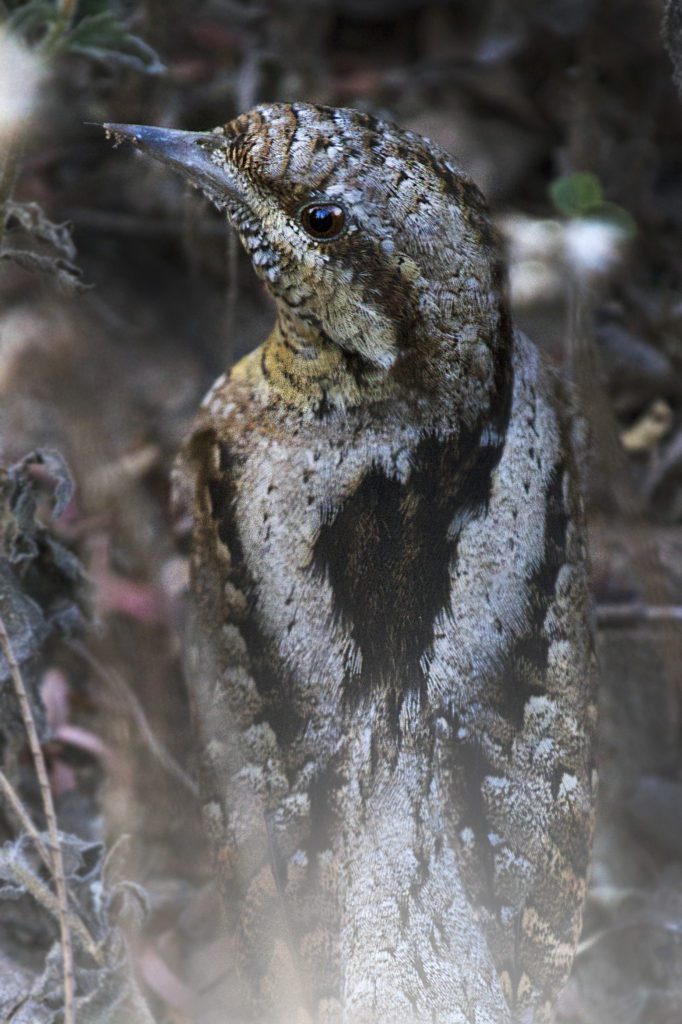
One of the strangest birds that migrate down to India in winters is Eurasian Wryneck. This one belongs to the woodpecker family.
It gets its name because of their ability to turn their necks in all direction in different circumstances. They breed in the Himalayas and migrate down to Southern India in winters.
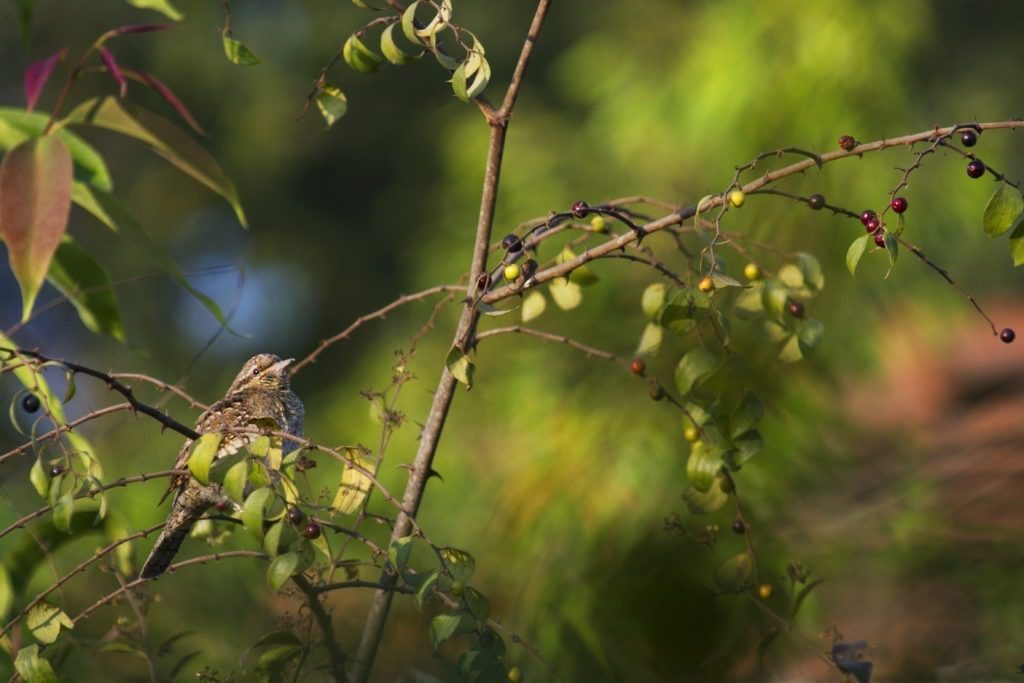
Did you know?
- Whenever Wrynecks are threatened at their nesting sight, they will show a very aggressive threat display. They try to appear to mimic a snake, with the help of their necks that twist into 180 degrees and also hiss loudly. This type of behavior was first observed way back in the 1500’s.
- Due to this strange behavior, they were often used in witchcraft to ‘jinx’ someone. Hence the scientific name (Jynx torquilla).
Contributed by – Swanand Deshpande, Kshitij Gambhir, and Mugdha Desai, Denwa Backwater Escape, Satpura

